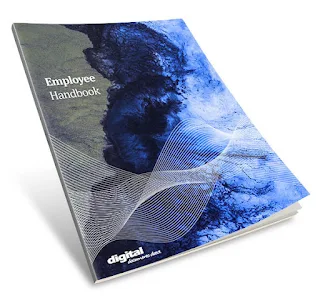The Crucial Role of Employee Handbooks in Business
In the bustling landscape of modern businesses, employee handbooks often play a role akin to a company's North Star—a guiding light that helps steer both employers and employees through the intricacies of the professional journey.
Far from being mere bureaucratic documents, these handbooks serve as essential tools that contribute to the success, cohesion, and sustainability of a thriving workplace.
Setting Expectations and Standards
At the heart of every successful organization lies a set of clear expectations and standards. Employee handbooks serve as the blueprint for these guidelines, providing a comprehensive overview of the company's policies, values, and code of conduct.
By clearly outlining what is expected of employees, organizations establish a foundation for a positive and productive work environment.
Legal Compliance and Risk Mitigation
Navigating the legal landscape of employment regulations can be a daunting task for both employers and employees. Employee handbooks act as a shield against legal pitfalls by clearly articulating the rights and responsibilities of both parties.
By staying up-to-date with current laws and industry standards, these handbooks help mitigate risks, ensuring the company remains compliant and avoids unnecessary legal disputes.
Promoting Consistency and Fairness
Consistency is the glue that holds a workplace together. Employee handbooks act as the referee in ensuring a level playing field for all employees. When policies are consistently applied, it fosters a sense of fairness and equity, ultimately contributing to a positive organizational culture.
This consistency also plays a crucial role in building trust among employees, leading to increased job satisfaction and loyalty.
Facilitating Onboarding and Training
The onboarding process is a critical juncture for new employees, and an effective employee handbook serves as their compass during these early days.
By providing a comprehensive overview of company policies, procedures, and expectations, handbooks accelerate the onboarding process and contribute to a smoother integration of new team members. This, in turn, enhances productivity and reduces the learning curve for new hires.
Communication and Transparency
Transparent communication is the cornerstone of a healthy workplace. Employee handbooks act as a central repository for information, ensuring that everyone is on the same page. Whether it's addressing grievances, outlining benefits, or explaining the company's mission, these handbooks foster open communication channels that are essential for a collaborative and transparent organizational culture.
In the intricate dance of modern business, where every step must be deliberate and well-coordinated, employee handbooks emerge as indispensable partners. Beyond being rulebooks, they are the architects of organizational culture, ensuring that everyone within the company understands their role and responsibilities.
By recognizing the importance of employee handbooks, businesses can cultivate an environment where employees thrive, legal risks are minimized, and success becomes a shared journey.
Read more about Employee Handbooks at this link.




Comments
Post a Comment